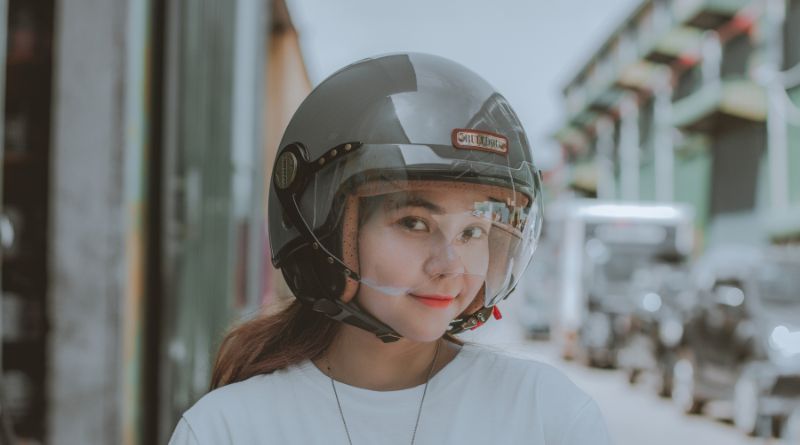Riding a motorcycle offers a unique sense of freedom and adventure, but it also comes with its own set of risks. To ensure a safe and enjoyable ride, investing in high-quality motorcycle gear is crucial. This guide will explore the essential motorcycle gear you need, highlighting its importance and offering tips on how to choose the right equipment for your needs.
Table of Contents
1. Helmets
Importance: A helmet is arguably the most critical piece of motorcycle gear. It protects your head in the event of a crash, reducing the risk of severe injury or death. Helmets are designed to absorb impact and shield your face from debris, wind, and weather conditions.
Types:
- Full-Face Helmets: Provide the most protection, covering the entire head and face.
- Modular Helmets: Combine the features of full-face and open-face helmets with a flip-up chin bar.
- Open-Face Helmets: Offer less coverage but are more comfortable and provide better visibility.
- Half Helmets: Provide minimal coverage, primarily protecting the top of the head.
Choosing the Right Helmet:
- Ensure a snug fit without being too tight.
- Check for DOT, ECE, or Snell certification to ensure safety standards.
- Consider additional features such as ventilation, sun visors, and Bluetooth compatibility.
2. Riding Jackets
Importance: Riding jackets protect your upper body from abrasion in case of a fall and provide additional protection against the elements. They often come with built-in armor for extra protection.
Types:
- Leather Jackets: Offer excellent abrasion resistance and durability.
- Textile Jackets: Typically made from synthetic materials, offering better ventilation and waterproofing.
- Mesh Jackets: Designed for warm weather riding, providing excellent airflow.
Choosing the Right Jacket:
- Look for jackets with CE-rated armor for protection.
- Choose a jacket with adjustable fit and ventilation for comfort.
- Ensure it has reflective materials for visibility.
3. Gloves
Importance: Motorcycle gloves protect your hands in case of a crash and enhance grip on the handlebars. They also provide warmth and protection from the elements.
Types:
- Full-Finger Gloves: Provide the most protection and are suitable for all weather conditions.
- Short-Finger Gloves: Offer less protection but are cooler and more comfortable in warm weather.
- Waterproof Gloves: Designed for riding in wet conditions.
Choosing the Right Gloves:
- Ensure a snug fit with adequate finger mobility.
- Look for gloves with reinforced palms and knuckles.
- Consider additional features such as touchscreen compatibility.
4. Pants
Importance: Motorcycle pants protect your legs from injury and abrasion. They are often reinforced with armor and abrasion-resistant materials.
Types:
- Leather Pants: Offer high durability and abrasion resistance.
- Textile Pants: Made from synthetic materials, providing versatility and comfort.
- Jeans with Armor: Casual yet protective, combining the look of regular jeans with built-in armor.
Choosing the Right Pants:
- Ensure they have CE-rated armor for knee and hip protection.
- Choose pants with adjustable fit and ventilation.
- Look for reinforced areas in high-impact zones.
5. Boots
Importance: Motorcycle boots provide ankle support and protection, as well as shield your feet and lower legs from injury.
Types:
- Sport Boots: Designed for high-performance riding with a focus on protection and comfort.
- Cruiser Boots: Offer a more casual look with added comfort and protection.
- Adventure Boots: Versatile and durable, suitable for off-road and on-road riding.
Choosing the Right Boots:
- Ensure they have reinforced areas for ankle and shin protection.
- Choose boots with a good grip and waterproofing if needed.
- Ensure they fit well and provide comfort for long rides.
6. Protective Armor
Importance: Armor provides additional protection to critical areas of your body, such as your back, chest, and ribs. It is often incorporated into jackets and pants but can also be worn separately.
Types:
- Back Protectors: Shield your spine from impact.
- Chest Protectors: Protect your chest and ribs.
- Hip and Knee Protectors: Provide protection to the hip and knee joints.
Choosing the Right Armor:
- Ensure it is CE-certified for safety.
- Look for armor that is flexible and comfortable.
- Choose armor that fits well and does not restrict movement.
FAQs
Q: How often should I replace my motorcycle gear? A: Replace your gear if it has been involved in a crash, shows signs of wear or damage, or if it no longer fits properly. Helmets should generally be replaced every 5 years, even if they appear intact, due to aging materials.
Q: Can I use my motorcycle gear in all weather conditions? A: Most motorcycle gear is designed to handle various weather conditions. However, for extreme weather, consider gear with specific features like waterproofing, ventilation, or thermal liners.
Q: How do I know if my motorcycle gear fits correctly? A: Gear should fit snugly but not restrict movement. Check for proper coverage and adjustability. A well-fitting helmet should be snug around your head without moving when you shake it.
Q: Are there any legal requirements for motorcycle gear? A: Legal requirements vary by country and state. In many places, wearing a helmet is mandatory, while other gear may not be legally required but is highly recommended for safety.
Q: How can I maintain and care for my motorcycle gear? A: Follow the manufacturer’s care instructions. Regularly clean and inspect your gear, store it in a cool, dry place, and address any damage promptly to ensure it remains effective.
Investing in quality motorcycle gear is essential for safety and comfort. By choosing the right equipment and maintaining it properly, you can enjoy your rides with confidence, knowing you’re well-protected on the road.
